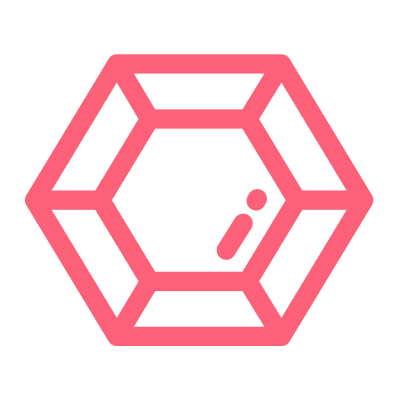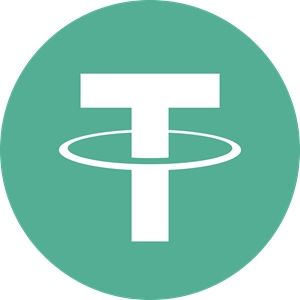TOKEN2049 is one of the most prestigious Web3 events organized annually in Singapore and Dubai, both countries known for being blockchain-friendly.
The event gathers executives and founders from leading Web3 companies, where they share views on the industry and give updates about their particular projects. This allows Web3 enthusiasts to become aware of the recent global developments and widen their perspective on the entire ecosystem.
The latest TOKEN2049 event in Dubai saw more than 20,000 attendees and over 300 speakers. The event also attracted over 5,000 Web3 companies. Despite Dubai recording the heaviest rainfall in 75 years, the TOKEN2049 team and their co-founder Alex Fiskum made the event possible.
The event’s biggest highlight came from Telegram as their CEO and founder, Pavel Durov, and Tether’s CEO, Paolo Ardoino, revealed on stage that $USDt and $XAUt launch in the TON and Telegram ecosystem.
Key Insights From TOKEN2049
Pavel Durov
During the discussion, Pavel highlighted the importance of blockchain technology for Telegram because it allows developers to build apps Telegram Mini Apps. Telegram Mini Apps are apps integrated directly into Telegram, allowing the user to interact with them without ever leaving the popular messenger platform..
In fact, as per Pavel, this is one of the reasons why Telegram has adopted blockchain technology at such a deep level: it helps with the values of the platform by giving power to the people and enriching our ecosystem.
The result of this is already visible because out of 900 million active users of Telegram, 360 million of them already interact with these mini-apps every day, and the number is expected to grow.
While talking to the audience, Pavel highlighted the importance of blockchain technology when it comes to supporting Telegram’s creator program, in which Telegram shares 70% of ad revenue with creators. This is one of the most generous revenue-sharing models in the history of social media.
Pavel talked about the importance of remaining transparent with the users, which is not the case with other social media platforms.
He highlighted how Telegram’s algorithms are designed to support creators and help them reach out to their target audience. Something unique in its kind because other platforms use shadowbans when their narrative is not shared.
Furthermore, Pavel stated that utilizing Toncoin for payments is the best way possible as it comes with the ease of withdrawals and transfers to creators who are present in different parts of the world. With the help of the creator’s program, Telegram’s goal is to is to create is create a true internet of ownership and reward users for their creativity.
Another thing Pavel talked about while addressing the audience was how Telegram utilized blockchain technology by tokenizing usernames and launching “anonymous number NFTs.”
With the initiative of Telegram, it was the first time that users could “own” their usernames and do whatever they would like, which generally includes selling their usernames to other users. In fact, users who bid their usernames got 95% of the revenue, and combined with Telegram’s anonymous number of NFTs, $350 million was generated in sales.
Moving forward, Pavel stated that Telegram will offer a lot more NFTs that will have some form of real-life value because there is so much that the world can do with NFTs that has not been discovered yet. Telegram will unleash a new era of non-fungible tokens by giving millions of users easy access to NFTs.
Marcin Kazmiercza
Similar to Tether, RedStone is also collaborating with The Open Network. The collaboration is extremely exciting for the entire ecosystem as RedStone is the only Oracle that supports Decentralized Finance’s expansion on the TON blockchain. This will give room for more DeFi development on Telegram.
Currently, RedStone secures almost $2 billion in assets on-chain and has ample scalability to grow this number. The announcement did not come from Marcin but rather from Paolo Ardoino, CEO of Tether, who ensures the partnership is well underway.
While moderating a panel on Liquid Staking and Re-Staking, Marcin and other founders made three notable announcements.
The first announcement was made by Mike, the CEO of EtherFi. EtherFi is a renowned liquid re-staking on Ethereum. During the talk, Mike confirmed EtherFi’s focus on EigenLayer expansion, with also a door open to launching on the new re-staking platforms.
During the discussion, the second announcement was made by Brian, who is the CEO of Chorus One. Chorus One is a renowned staking solution that works on more than 50 decentralized networks. Brian talked about the complexity of node operation with versatile Actively Validated Services (AVS) while also reassuring that Chorus will use its 6-year-long experience to navigate the space.
Lastly, Marcin made the third announcement, in which he confirmed rumors about RedStone’s $500 million deal with EtherFi. The deal will allow RedStone to provide what it does best, which is to help EtherFi validate Oracle data on AVS.
Marcin stated that the timeline of the deal will depend on the rollout of M2 (withdrawals) and M3 (slashing) on EigenLayer. However, the work will be completed somewhere around Q3 to Q4 of 2024 for the entire mainnet implementation.
Paolo Ardiono
During the presentation, Ardiono talked about the reasons behind the growth Tether has achieved so far and where it plans to go in the coming years.
The first reason behind Tether’s growth is its’ secure network, which is amongst the best. The security ensures that the Tether will remain pegged to the US dollar, and its value will not decrease in the coming years. Tether has an excess equity of $6 billion and is over-collateralized by 106%.
Furthermore, Tether holds $90 billion in US t-bills, more than Australia and Spain. All of these things ensure stability and, therefore, are the reasons behind the growth of Tether.
Secondly, Tether has a perfect market fit. Unlike banks, they welcome people with as much money as they have, which is ideal for economies that have high inflation and do not have a large capital to get started.
Another thing Ardiono talked about was Tether’s upcoming integration with The Open Network. This is a big step forward for Tether because it will give easy access to hundreds of millions of users on Telegram.
Utilizing TON will result in low fees, so Tether has decided on a fixed fee that will be under 15 cents. There will be no traffic-based fluctuations as it will be scalable for billions of users.
Ardiono stressed that they chose Telegram because of the ecosystem that Telegram built, which is one of a kind. It already has a massive community and is ready to welcome even more users.
Additionally, as other companies are utilizing banks and fiat to support their creators, this system is not scalable, nor is it empowering, as banks can withhold payments whenever they want to. This can be resolved by utilizing Tether, making it a truly win-win deal for the two.
The goal is to give users a safe and instant way to send or receive money. Additionally, with this latest partnership, there is a great chance for growth for both companies.
Final Thoughts of the TOKEN2049 Event
As TOKEN2049 concludes, the insights from industry pioneers like Pavel Durov and Paolo Ardoino highlight a transformative future for Web3 and a high potential for mass adoption. Their groundbreaking work with TON, Telegram and Tether is paving the way for a more decentralized and user-centric digital ecosystem.
The successful integration of $USDt and $XAUt into the TON framework promises enhancedliquidity for the TON Ecosystem, marking a significant advance in Web3 user onboarding and creators’ economy.



